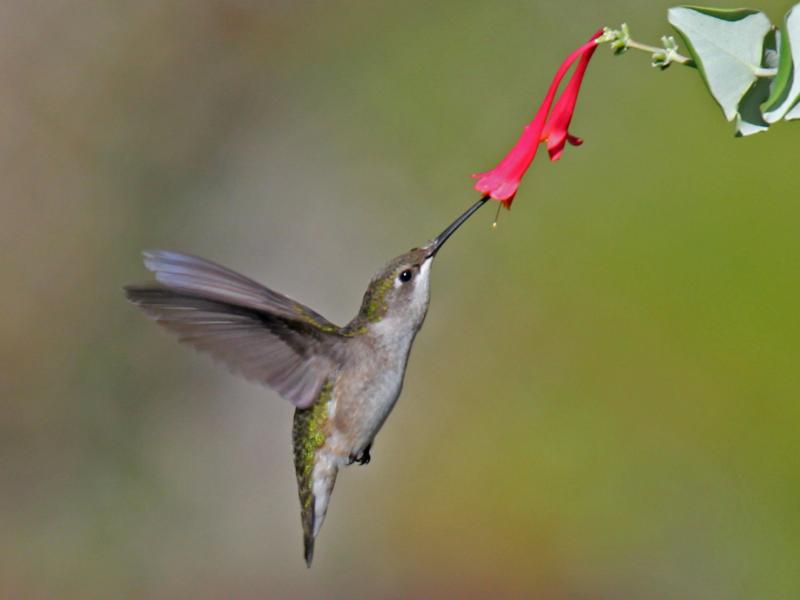Hummingbird Stories
Just this past week, Jeff’s mom and younger brother asked us questions about ruby-throated hummingbirds. The brother (let’s call him YB, for “younger brother”) recounted the odd and sad story of finding a dead hummingbird with its beak stuck in the screen of his garage window. He wondered how it could have happened and also whether the bird was a male or a female. We told him that female hummingbirds in spring collect pieces of spider web to use to make their nests and that could have accounted for why his deceased hummingbird was poking around a window screen.
Another possibility, and perhaps more likely, is that the hummingbird was looking for insects for its nestlings. Spiders and flies around windows would be fair game for a bird trying to find food for its young. Perhaps just probing into the screen for a fly had caused the bird to wedge the bill in so hard that it couldn’t extract itself, became exhausted, and eventually died. Since male ruby-throated hummingbirds do not participate in nest-building, incubation, or rearing of the young, this scenario would have meant that the bird in question was a female.
A third possibility could have been that the bird had seen its reflection in the glass behind the screen (although this seems unlikely) and had mistaken it for another individual and in the process of trying to fight with it had driven its bill into the screen. Males are particularly aggressive toward other males during the breeding season, so this scenario would be more likely if the deceased bird were a male.
YB hadn’t looked carefully to see whether the dead bird had a dark throat, which would have indicated a male, or a white throat, indicating a female (all immature birds also have a white throat in their first months but it was too early in the season to be a young-of-the-year). We suspect, though, that he would have noticed the dark throat of a male, so we suspect it was a female looking for spider web or food.
Mom had a happier tale and a question about her hummingbird sightings. She had been up to Campobello Island, New Brunswick, in Canada, recently with a relative who had a hummingbird feeder. They noticed that they were only seeing female-type ruby-throats and wondered where the males were. As we mentioned earlier, the males do not help with incubating or caring for young so whether or not they stay around is probably rooted in whether there is a good food supply. There are still many mysteries in ruby-throated hummingbird biology as they have not been that well-studied. A few studies seem to indicate that, at least in some areas of their range, males do depart earlier in fall migration than adult females. The latter, in turn, leave earlier than the young-of-the year. It could be that the lack of males that Mom had noticed was because the adult males were already starting to drift south, perhaps making a slow return to their Central American wintering grounds.
We don’t have a hummingbird feeder up at our house but have been watching a female or immature ruby-throat coming to the bee balm in our garden too. Now we’ll be keeping a sharp eye out to see if there are any adult males still around.
Jeffrey V. Wells, Ph.D., is a Fellow of the Cornell Lab of Ornithology. Dr. Wells is one of the nation's leading bird experts and conservation biologists and author of “Birder’s Conservation Handbook”. His grandfather, the late John Chase, was a columnist for the Boothbay Register for many years. Allison Childs Wells, formerly of the Cornell Lab of Ornithology, is a senior director at the Natural Resources Council of Maine, a nonprofit membership organization working statewide to protect the nature of Maine. Both are widely published natural history writers and are the authors of the book, “Maine’s Favorite Birds” and “Birds of Aruba, Bonaire, and Curaçao: A Site and Field Guide” from Cornell Press.
Event Date
Address
United States



























